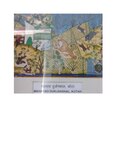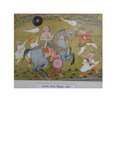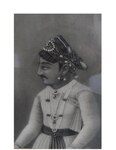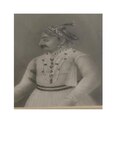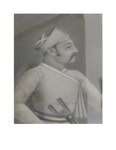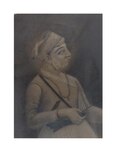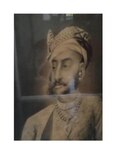Princely state of India
Kota State, also known as Kotah State,[1] was a state in India, centered on the city of Kota, now located in Rajasthan State of the India.
Rulers
The rulers of Kota were from the Hada sect of the Chauhan Rajput clan and bore the title of Eshaan.[3][4]
Raos and Maharaos
- 1631 - 27 January 1648: Rao Madho Singh
- 1648 - 26 April 1658: Rao Mukund Singh
- 1658 - 23 August 1682: Rao Jagat Singh
- 1682 - February 1683: Rao Prem Singh
- 1683 - April 1696: Rao Kishor Singh I
- Apr 1696 – 18 June 1707: Rao Ram Singh I: (b. 16.. – d. 1707)
- 18 Jun 1707 – 8 September 1713: interregnum
- 8 September 1713 – 19 June 1720: Rao Bhim Singh I: (b. 1682 – d. 1720)
- 19 Jun 1720 – Oct 1723: Rao Arjun Singh: (d. 1723)
- Oct 1723 – 1 August 1756: Rao Durjan Sal: (d. 1756)
- 1756 – Mar 1757: Rao Ajit Singh: (b. bf. 1676 – d. 1757)
- Mar 1757 – 17 December 1764: Rao Shatru/Chatar Sal Singh I: (b. bf.1718 – d. 1764)
- 17 Dec 1764 – 17 January 1771: Rao Guman Singh: (b. 1724 – d. 1771)
- 17 Jan 1771 – 19 November 1819: Maharao Umaid Singh I: (b. 1761 – d. 1819)
- 19 Nov 1819 – 20 July 1828: Maharao Kishor Singh II: (b. c. 1781 – d. 1828)
- 20 Jul 1828 – 27 March 1866: Maharao Ram Singh II: (b. 1808 – d. 1866)
- 27 Mar 1866 – 11 June 1889: HH Maharao Raja Shatru Sal II : (b. 1837 – d. 1889)
- 11 Jun 1889 – 27 December 1940: HH Maharao Raja Umed Singh II: (b. 1873 – d. 1940) (from 23 May 1900, Sir Umed Singh II)
- 11 Jun 1889 – 5 December 1896: .... – Regent
- 27 Dec 1940 – 18 April 1948: HH Maharao Raja Sir Bhim Singh II: (b. 1909 – d. 1991)
Titular Maharaos
On 18 April 1948, the Maharao merged his state with the Union of India and the state thus ceased to have independent existence. The Maharao lost his ruling powers but continued to hold certain titles and privileges until the year 1971, when everything was withdrawn. Nevertheless, the Maharao remains the head of the erstwhile royal family and an important cultural figure in Kota. The non-ruling Maharaos are listed below:
- 18 April 1948 – 21 June 1991: Maharao Raja Bhim Singh II: (b. 1909 – d. 1991); last ruling Maharao.
- 21 June 1991 – 29 January 2022: Maharao Raja Brijraj Singh
- 29 January 2022 - Present : Maharao Raja Ijyaraj Singh
- The heir apparent is Jaidev Singh, only son of Maharao Ijyaraj Singh
Maharao Bhim Singh II in history, the day of 12 February is associated with the Father of the Nation, Mahatma Gandhi .On the same day in 1948, his ashes were flown to several holy ponds including the Ganges River in Allahabad,Chambal River Ghat in Kota, Rajasthan. 13 days before this, i.e. on January 30, 1948, Gandhiji was assassinated by Nathuram Godse. On the 13th day of his death, a kalash was reverentially flown on the banks of the Chambal river as a nation-wide expedition, in the presence of thousands of thousands of male women, the urns of Mahatma Gandhi were flown by aircraft by Kota Maharao Shri Bhim Singh Ji During this time, thousands of people were present at the Ghat besides the former Maharao Bhim Singh of Kota. This inscription was installed by the then Home Minister Rajchandra Sena in memory of it, this inscription still remains on Rampura Chhoti Samaj which represents this historical site as a memorial. Is the place where immersion of Mahatma Gandhi's ashes was executed.
- Maharaos Kota
-
Maharao Durjanshal Singh,Kota
-
Maharao Shatrushal, Kota
-
Maharao Ummed singh I, Kota
-
Maharao Arjun singh Kota
-
Maharao Ajit singh Kota
-
Maharao Madho Singh
-
Maharao Kishor singh, Kota
-
Maharao Shatrushal Kota
-
Maharao Durjanshal Singh,Kota
-
Maharao Shatrushal, Kota
-
Maharao Ummed singh I, Kota
-
Maharao Arjun singh Kota
-
Maharao Ajit singh Kota
-
Maharao Madho Singh
-
Maharao Shatrushal Kota






